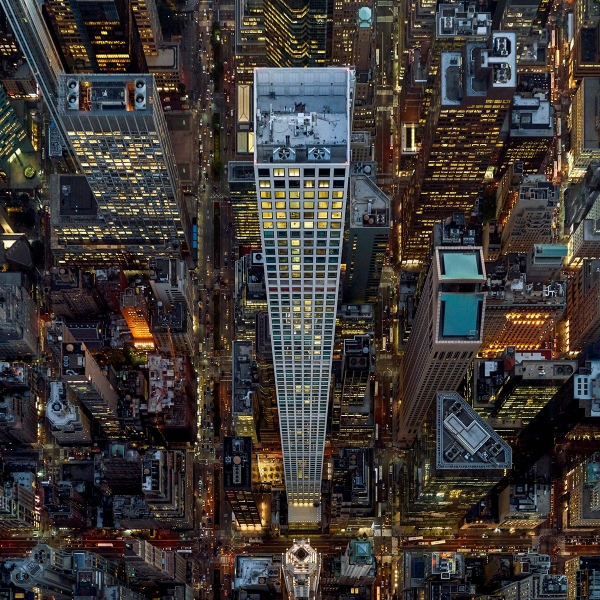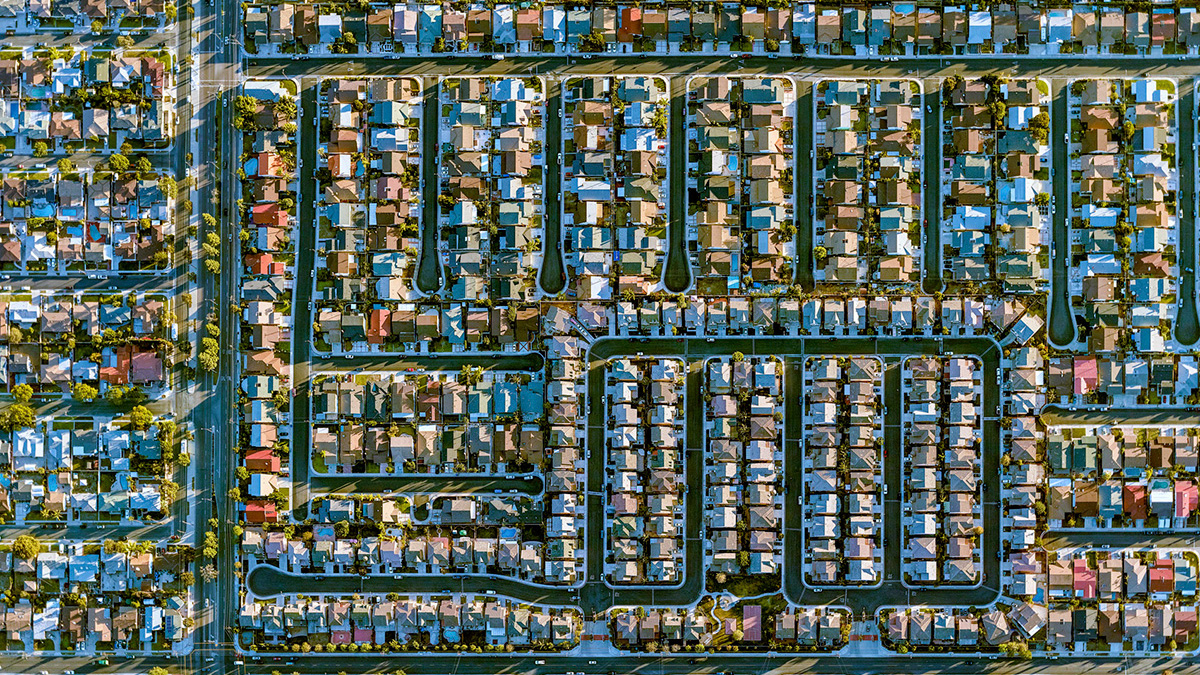Aerial photography gives a lofty perspective on cities
Photographer Jeffrey Milstein's photobook “LANY” features aerial photographs of Los Angeles and New York.
• April 2018 issue
Los Angeles and New York from above
Long transfixed by the view from the air (he got his pilot’s license when he was just 17), Jeffrey Milstein’s new photobook “LANY” features aerial imagery of edifices in Los Angeles and New York. Reflecting his background in architecture and art, Milstein’s compositions reveal the order and beauty of architectural forms from a bird’s-eye view.

The aircraft: Milstein makes his photos from either a Cessna 182 airplane or a small gas engine helicopter. With the Robinson helicopter, which has two rows of seating, Milstein sits in the back; with the two-seater Schweizer, he sits in the front with his camera equipment wedged between him and the pilot.
The plan: Milstein maps a flight plan for particular structures he’d like to photograph. Having such a plan is especially important in big cities like New York and Los Angeles, where a flight clearance may be required ahead of time. He always flies at the end of the day, usually planning for two hours of air time, making photographs during the golden hour and just as the sun goes down and the city lights go up.
The setup: To get straight-down shots, the helicopter door is removed prior to the flight. When Milstein sees something he’d like to photograph, he instructs the pilot to make sharp turns so that the copter leans toward the ground (he’s of course strapped in by a seatbelt). Unfortunately, making these tight turns means “pulling Gs,” which causes the aircraft to shake. Milstein uses a gyro attached to the bottom of his camera to correct for vibration. It’s heavy and unwieldy, but it does the job, he says.

The equipment: Most of the photos in “LANY” were made with a Phase One IQ 180 or a Phase One IQ3 digital back. With the IQ 180, Milstein used an ALPA 12 TC camera with either a 60mm Rodenstock lens or a 75mm Schneider lens, both of which he dubs “superb” except that their built-in shutters are limited to 1/500 second, which can be slow in bumpy air. With the IQ3, he used the Phase One XF camera and 80mm or 110mm Schneider lenses, which were excellent, except that shooting straight down caused lens creep—losing focus after a few shots. If he wants to print his images large—he’s gone as big as 80 inches and up for art exhibitions—he sticks with Phase One. For lower resolution images he uses the Sony a7R II, whose built-in image stabilizer is very effective, he says.
Amanda Arnold is the associate editor of Professional Photographer.


 View Gallery
View Gallery